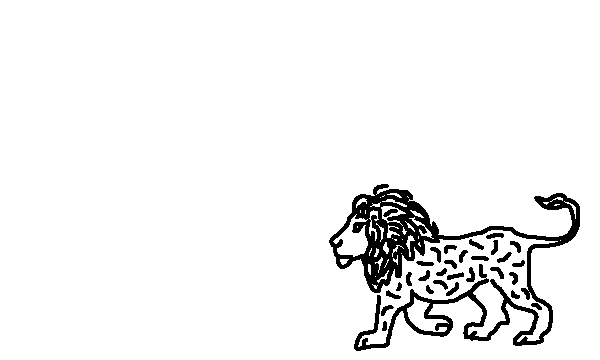The African wild dog dispersal project is a collaboration between University of Zurich and BPC.
Dispersal is an important process governing the persistence of wild animal populations. Upon reaching sexual maturity, individuals usually disperse from their natal home range to search for potential mates and a suitable territory to settle. By taking individuals away from the natal group, dispersal maintains gene flow, allows rescuing small and isolated groups, and enables the colonization or recolonization of unoccupied habitats. In human-dominated landscapes, however, dispersing animals find it increasingly difficult to freely move between suitable locations. For this reason, the identification and preservation of wildlife corridors has become a task of utmost importance for conservation authorities.
In 2003, the countries of Angola, Botswana, Namibia, Zambia and Zimbabwe have agreed to preserve an unprecedented network of wildlife corridors, connecting 35 already-existing national parks, game reserves and other protected areas. The Kavango-Zambezi Conservation Area (KAZA) spans roughly 520,000 square kilometers, making it the world’s largest transboundary conservation area. But do the boundaries of the KAZA match the dispersal needs of the species it seeks to protect? In a collaborative effort, researchers from the University of Zurich and Botswana Predator Conservation sought to answer this question by shedding light on the dispersal behavior of the African wild dog (Lycaon pictus), KAZA’s most mobile, yet most endangered species.
Endangered predator
African wild dogs currently number around 6,000 free-ranging individuals that are distributed across a few remaining populations in southern and eastern Africa. Within these populations, wild dogs form cohesive packs comprising up to 30 individuals that are led by one dominant couple. After reaching sexual maturity, wild dogs disperse in same-sex coalitions to find potential mates and suitable territory to settle. During this journey, wild dogs cover impressive distances of up to 500 km within only a few days.

Wildlife corridors for dispersing wild dogs inside and outside the Kavango-Zambezi transfrontier conservation area, the world’s largest transboundary conservation area. Graphic: UZH.
“We wanted to investigate through which habitats dispersing wild dogs preferably move and verify that crucial dispersal corridors are successfully encompassed by the Kavango-Zambezi Conservation Area”, says David Hofmann, first author of the study and PhD student at the University of Zurich. For this purpose, a research team equipped several wild dogs with GPS radio collars. This allowed the researchers to analyse through which habitats dispersers preferably moved and to predict a set of suitable wildlife corridors.
Few Corridors remain unprotected
The results from this analysis suggest that indeed most of the identified wildlife corridors run within the KAZA and that only very few suitable corridors remain outside its borders. Northern Botswana appears to act as a central hub for dispersing individuals that use the region to gain access to more remote locations within the KAZA. Another important corridor connects national parks in Angola and Zambia. “While the corridor still runs through areas that are largely unprotected, the KAZA initiative does intend to place those regions under protection,” says Hofmann. “There’s still room for improvements though, as several smaller dispersal routes remain currently uncovered by the planned protection zones of the KAZA.”

An African wild dog crosses a small canal in northern Botswana’s Okavango Delta. Although the dog depicted here crosses the river with ease, the same does not hold true for larger swamps, rivers and lakes that prove to be nearly insurmountable obstacles for the species. Photo Credit: Dominik Behr.
Not all areas are equally suitable for establishing wildlife corridors. In some countries, dispersers encounter only few obstacles, whereas in countries such as Zambia and Zimbabwe, high population densities and associated activities often prevent successful dispersal. The researchers thus urge that these country-specific differences be considered when implementing the KAZA initiative.
Lions and elephants also stand to benefit
The statistical methods and data employed in this study will not only be of use to decision-makers involved with the KAZA initiative but could also serve to delineate new protection zones or to modify existing ones. Overall, findings of this study emphasize that the Kavango-Zambezi Transfrontier Conservation Area largely meets the needs of dispersing African wild dogs, thereby making an invaluable contribution to conserving this endangered but charismatic species. “Ultimately, expanding the network of wildlife corridors not only helps African wild dogs; other species that live in the same ecosystem, such as lions, elephants, and cheetahs are also likely to benefit,” says Hofmann.
Literature:
David D. Hofmann, Dominik M. Behr, John W. McNutt, Arpat Ozgul, Gabriele Cozzi.
Bound within boundaries: Do protected areas cover movement corridors of their most mobile, protected species? Journal of Applied Ecology. 7 May 2021. DOI: 10.1111/1365-2664.13868




Recent Comments